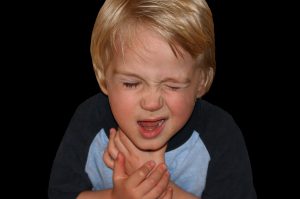What You Should Know About Children And Choking Hazards
 Michael Babboni
Personal Injury
Recalls
Michael Babboni
Personal Injury
Recalls
According to the Department of Health in New York State, choking is the fourth leading cause of accidental death in children under the age of 5. From bouncy balls to popcorn, there are plenty of offenders that could easily put your child in harm’s way. In order to ensure their safety, here are a few things you should know about children and choking hazards.
What is Choking?
Choking happens when a foreign object blocks the airway and causes the inability to breathe. An obstructed airway can quickly lead to severe complications, including brain damage and death. Children under 3 are especially at risk of choking due to the fact that they have a small airway and a more difficult time chewing and swallowing food. That aside, small children also tend to put various things in their mouth all the time.
4 Most Common Choking Hazards For Children
There are several things that a child could choke on, but some are much more common than others. Knowing what foods and objects to look out for will be you a better chance to hide, cut up, or otherwise get rid of these foods and objects in order to keep your child safe from harm’s way.
1. Peanuts, raw vegetables and other hard foods
Young children may try to swallow such foods whole since they don't typically master their chewing abilities until around age 7. Popcorn, celery, hard candy, watermelon with seeds and raw apples are other examples of hard food that should be withheld until after age 4. Completely chopping or slicing hard foods like carrots can greatly help prevent choking.
2. Hot dogs, sausages, cheese cubes, and other soft food
Hot dogs are the number one cause of food-related choking in kids under the age of 3. Every food poses a choking risk in young kids but the hot dog has just the right size and consistency to perfectly block the airway. Slicing them into tiny pieces and removing skin when needed can prevent choking.
3. Marbles, balls, balloons, and other toys
Un-inflated and popped balloons are a leading cause of toy-related choking deaths, according to the Consumer Product Safety Commission. Marbles and balls are also potentially hazardous to young children, especially little ones who try to put just about everything in their mouth. Toys with small parts and doll accessories like tiny shoes and jewelry can also pose a choking hazard. Always read age guidelines when selecting toys and teach older kids to keep their toys out of reach from younger siblings.
4. Safety pins, coins, and other household objects
Safety pins, coins, pen caps, nails, tacks and paper clips are common household items that are responsible for many choking incidents in young children. Make sure small objects are off the floor and safely out of reach of curious hands. Various kitchen items are also potential choking hazards. For example, bottle caps, especially sweet tasting ones like those on chocolate syrup and pancake syrup bottles can be dangerous to little ones trying to lick the drops out of the caps.
How to Prevent Choking
To help prevent choking, children should never be left unattended when eating. They should eat sitting straight up. Foods that have a tendency to cause choking should be avoided or cut into pieces before being served to small children. Children under 3 should not be allowed to play with toys with small pieces. Older children should be supervised when playing with these toys. It is recommended that all parents learn how to perform cardiopulmonary resuscitation and abdominal thrusts, also known as the Heimlich maneuver.
This will ensure that if your child ends up choking on an object or food, that you will be able to unlodge it safely.
